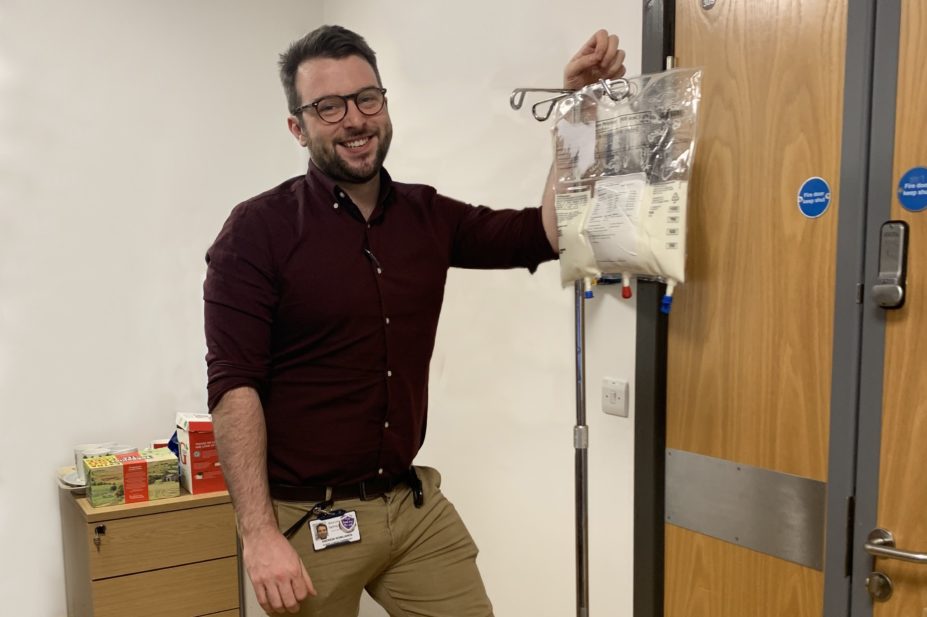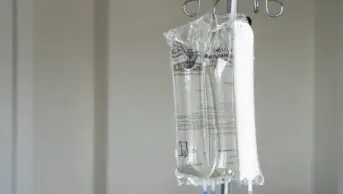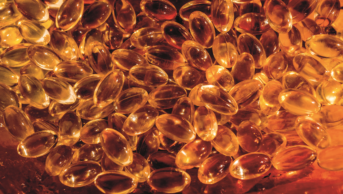
Andrew Rowlands
My role working with the wider nutrition support team as lead nutrition pharmacist at Wirral University Teaching Hospitals NHS Foundation Trust is a great example of how multidisciplinary team working can really improve the health of patients who have chronic, complex needs.
Clinical nutrition is an area that has seen pharmacists working closer with the clinical team, rather than focusing on the compounding. Increasing numbers of nutrition team pharmacists with a clinical, rather than an aseptic, background is evidence of this.
09:00 — start
I attend a multidisciplinary team meeting in preparation for the ward round. The nutrition support specialist nurse, dietitian, gastroenterologist and I review all of our inpatients away from the clinical area. This is possible as our trust is a centre of digital excellence, with nearly all information, including laboratory and radiology results, clinical notes and prescriptions, being electronic. This means that we are able to review notes before formulating any treatment plans and note any questions for the surgeons or issues that we need to discuss with the patient.
We review referrals for patients who cannot absorb their oral diet. The two main reasons for referral are a non-accessible gut (e.g. oesophageal carcinoma or gastric perforation), or a non-functioning gut (e.g. obstruction, severe inflammatory bowel disease, small bowel syndrome).
I look through the prescription chart of a new referral for a patient with a small bowel obstruction who is also epileptic. I arrange for their medicines to be switched from the oral route (which is non-viable) to intravenous. We decide the patient will require parenteral nutrition.
The dietitian calculates the patient’s requirements of macronutrients — calories, nitrogen, fluid, carbohydrate and lipids
The first step is to assess if the patient is at risk of refeeding syndrome. This is a dangerous condition for patients who have not received much in the way of nutrition for an extended period before they are admitted. If the patient is at risk, we start their parenteral nutrition using fewer calories than normal, with additional vitamins, particularly thiamine, to reduce this risk. I check the prescription chart to ensure that additional calories are not inadvertently prescribed, for example, a bag of 5% glucose can push patients who are very high risk into refeeding syndrome. We will need to check the patient’s biochemistry profile daily and may need to be aggressive with electrolyte replacement to ensure that severe hypokalaemia does not occur.
The dietitian will calculate the patient’s requirements of macronutrients — calories, nitrogen, fluid, carbohydrate and lipids. We will then decide on what products to use. We have the option of using pre-made parenteral nutrition bags that our aseptic services department can manipulate by adding in electrolytes, vitamins and trace elements. Alternatively, we can make completely bespoke, or ‘compounded’ bags. As a team, we decide which bag the patient needs.
10:00
We then visit the reviewed patients on the ward round with the aim of optimising their nutrition. We are often joined by junior medical staff, student nurses, dietitians and pharmacists.
We talk the patients through their diagnosis and what our shared aims and objectives are. The dietitian will ask about dietary history and check some anthropometric measurements, such as grip strength and estimated body composition. The nurse will check the patient’s intravenous access and arrange for the patient to have a peripherally inserted central catheter. This will be done in the nutrition suite the following day. We talk about the logistics with the patient, how parenteral nutrition runs over 24 hours when first administered, and how we will adjust the parenteral nutrition bag over the first days and weeks to optimise their nutrition.
It’s important to make sure patients are aware of the intensive monitoring that takes place at the start of treatment. There are a several blood tests we need to check daily during initiation and some we will check on a regular basis (e.g. vitamins and trace elements). I will also discuss any of their concerns relating to their oral medicines and arrange any conversions that are appropriate.
The nutrition nurse will prescribe the parental nutrition and I will check it before sending it to the aseptic unit for dispensing.
11:30
Once our new patients have been are seen, we visit a stable patient who has been admitted for the past year. This patient has a high-output enterocutaneous fistula — this is an abnormal collection between the bowel and the skin and is treated in a similar fashion to high-output stomas. This developed as a complication from their emergency surgery a year ago, resulting from a bowel perforation.
We discuss concerns that they have with their ongoing treatment. During this consultation it’s apparent they are fed up with being in hospital for such a long time. We agree to look at how we can arrange for some time out of the hospital prior to a major upcoming procedure. Simply spending a bit of time with the patient, reviewing them holistically to explore their ideas, concerns and expectations can really help their state of mind. Patients having to manage stomas and being connected to infusions 12 hours per day really takes a toll on them. However, not all centres have easy access to mental health specialists who are incredibly useful for long stay patients.
Regular patient contact and reviewing progress with nutritional plans means strong relationships are developed with my patients. The patients that I see are likely to have multiple admissions and will continue to be seen in clinic as outpatients for years.
13:00
My focus is on outpatients during the afternoon. I meet with the specialist nurses who have seen patients in clinic and make changes to the prescriptions of patients who are with the homecare company. I get asked for advice on supplements, vitamin replacement and general questions about medicines.
After reviewing medication and medical history, I liaise with the GP to discuss the problem and we come up with a solution together
One of the patients I review today is an older patient with short bowel syndrome. She is starting to become overloaded with worsening ankle oedema, which makes it difficult to determine her progress on parenteral nutrition as any weight gain is masked by fluid retention. She is also very sensitive to fluids, so we are having to modify her home regimen on a regular basis to give more concentrated solutions. We also need to be wary of kidney injury and dehydration by giving too little fluid. We will continue to review her progress on a weekly basis until things settle down.
16:30 — finish
Just as I am about to leave for the day, I am asked about a patient whose tablets are appearing whole in their stoma bag. After reviewing their medication and medical history, I liaise with the GP to discuss the problem and we come up with a solution together. I relay our management decision to the specialist nurse looking after the patient.
I work alongside a great team of nurses, dietitians, surgeons and gastroenterologists. It is an enjoyable and fulfilling role for a pharmacist owing to the clinical complexity, variety of patients and need for good teamwork — linking clinical aspects to technical considerations with staff working in the pharmacy aseptic unit.
Box: Are you interested in a similar role?
- A nutrition support lead pharmacist will be banded at 8a — band 7 pharmacists will often be trained up as part of a rotation;
- Experience of working in general/colorectal surgery is essential, it is useful to have some experience of gastroenterology and critical care. Patients receiving parenteral nutrition will come with any and all comorbidities, which need to be considered and managed alongside their intestinal failure;
- Nutrition support pharmacists are often based within the surgery; in some centres the nutrition support pharmacist may work in medicine, usually gastroenterology or critical care;
- If you are interested in this type of role, then take an interest in parenteral nutrition. Shadow members of the nutrition team — not just the pharmacist — and spend time with dietitians assessing patients. Watch the nutrition nurse place a peripherally inserted central catheter line and shadow an outpatient clinic;
- Be prepared to go out and learn things outside your comfort zone — surgical anatomy, management of central intravenous access lines and how calorie requirements are calculated;
- Study towards a clinical diploma, prescribing course and clinical skills training;
- Use local or national resources — attend a regional study session, join specialist interest groups, such as the British Association of Parenteral and Enteral Nutrition. The British Pharmaceutical Nutrition Group also offers regular training sessions on the fundamentals of parenteral nutrition.


